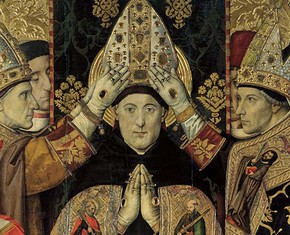The views expressed in our content reflect individual perspectives and do not represent the authoritative views of the Baha'i Faith.
Like most five-year-olds I drove my parents nuts with questions. “Curiosity killed the cat,” my mother said—but our cats were out in the barn, doing just fine.
So I kept asking my pesky, curious questions. One of the most important burning philosophical conundrums I remember asking about occurred to me on New Year’s Day. My family lived in a farm community in eastern Washington State up near the Canadian border, and, typical for the middle of winter, we had lots of snow on the ground. I asked my parents “Why does New Year’s come today? The year isn’t new yet, it’s still old and cold.”
Predictably, they laughed. After all, kids say the darnedest things, right? My dad said “New Year’s Day always comes in the middle of winter. That’s just the way it is—just accept it, son.” But after that day I kept wondering why the New Year didn’t fall on the first day of spring, where my child’s mind insisted it logically and rightfully belonged. I guess I must’ve been a pretty nerdy kid, because I did not understand why I had to accept something that made no logical sense.
About a decade later, in my teenage years, I learned about the Baha’i Faith. I didn’t think, at the time, that I believed in God—but the world-mindedness of new Faith intrigued me, so I investigated, went to Baha’i meetings, read and tried to deepen my knowledge and learn what I could.
As I learned, the Baha’i teachings began to make more and more sense to me. The Baha’i principles of the oneness of humanity, the essential unity of all faiths and the agreement of science and religion seemed rational, reasonable, inspirational and truly spiritual. As I studied the teachings and got to know the Baha’is themselves, I found that they welcomed my questions, rather than scoffing at them or shunning me for asking. I realized then why the Baha’i Faith has no clergy—because the Baha’i principle of independent investigation of the truth actually encourages questions. Someone said: “One of the Baha’i months is named “Questions”—so if you’re curious, this is the religion for you.”
My search took me a long time, though. For three years I studied, went to Baha’i meetings and meditated on what I learned. It wasn’t a simple process—I had to work through my own feelings about religion itself, about my ability to have faith, about what I truly believed. But once my questions were answered, I felt almost ready to declare my belief in Baha’u’llah’s beautiful Faith.
On the day I felt ready to become a Baha’i, though, for some strange and completely unknown reason, my unanswered childhood curiosity about New Year’s popped into my head. I didn’t completely understand why this small detail seemed so important to me. Who knows why, but it seemed like the very last piece of the puzzle.
Perhaps, I wondered, it had something to do with my childhood, and the rigid way I was raised in a fairly fundamentalist Protestant church—which definitely discouraged any independent investigation of the truth. The church taught me to just accept and believe what the minister said—which strongly impelled me to search for something else. A rebel, I wanted explanations that made sense, not just a pat on the head and a “that’s the way it is” dismissal.
Finally one cold February day I asked a Baha’i friend, a wonderful soul named Bob Gulick: “So when is the Baha’i New Year?”
“It’s called Naw-Ruz, which just means New Year in Persian,” Bob said. “It’s always on the vernal equinox, the first day of spring in the Northern Hemisphere.” I let out a big breath I hadn’t been aware of holding.
“Wonderful!’ I said, my words rushing out. “I never could figure out why New Year’s wasn’t on the first day of spring! It seemed so bizarre, so wrong to put it in the middle of winter.”
“Well, you’re right,” Bob said. “Naw-Ruz is on the first day of spring here in the Northern Hemisphere, where most of the people in the world live. Just about every faith celebrates that renewal of life. But of course the vernal equinox is the first day of fall in the southern part of the world. What’s important is that the sun illuminates the world equally on that day. The Baha’i writings say that’s a symbol of God’s message.”
Then Bob went to his extensive Baha’i library, pulled out a book, and read me this quote about Naw-Ruz:
From time immemorial this day has been consecrated, for in this there is a symbol.
At this moment the sun appears at the meridian and the day and night are equal. Until today the north pole has been in darkness. This sacred day when the sun illumines equally the whole earth is called the equinox and the equinox is the symbol of the divine messenger. The sun of truth rises on the horizon of divine mercy and sends forth its rays on all. This is the beginning of the spring. When the sun appears at the equinox it causes a movement in all living things. The mineral world is set in motion, plants begin to sprout, the desert is changed into a prairie, trees bud and every living thing responds, including the bodies of animals and men.
The rising of the sun at the equinox is the symbol of life and the human reality is revivified; our thoughts are transformed and our intelligence is quickened. The sun of truth bestows eternal life, just as the solar sun is the cause of terrestrial life. – Abdu’l-Baha, Divine Philosophy, p. 75.
Alright, I thought, this makes sense. The next day I became a Baha’i.
















Comments
Sign in or create an account
Continue with Googleor